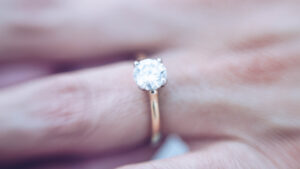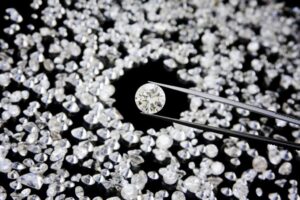Diamonds Through the Decades
Diamonds have enthralled humans for centuries with their enduring sparkle and appeal. Many tales and lore surround the diamond’s symbolism and stature, from ancient cultures until today. This symbolism makes them exceedingly prevalent in engagement rings and other romantic jewelry gifts. If you want to buy a diamond, it will help if you’re armed with knowledge about this valuable precious stone.

Pre-20th Century: The Early Sparkle
Ancient India reveals the first known use of diamonds, where they were venerated for their mystical properties. Royal jewelry was usually encrusted with diamonds to show off power and wealth. Likewise, when these brilliant stones reached Europe in the 15th century, they were adored by the upper crust of society and royalty. Because these rocks were so rare, it was an exclusive status symbol of the time. India remained the primary source of brilliant cut diamonds until the 18th century — at which point, the Brazilians also discovered diamonds and transformed the trade.
The Early 20th Century: Industry Evolution
Late in the 19th century, South Africa entered into the trade and created a dramatic increase in the production of these precious stones. At that time, the lucrative industry of diamond mining grabbed the attention of Cecil Rhodes and the De Beers mining family, who went on to create a monopoly and regulated diamond trade with consistently high prices.

Meanwhile, Art Deco was on the rise, and the preference for platinum also brought about a change for more geometric diamond shapes and sophisticated patterns. For example, while emerald-cut diamonds first became prominent during the 16th century, the Art Deco movement increased their popularity substantially.
The Mid-20th Century: Shaping Diamonds Amid Turmoil
World War II disrupted the diamond trade as access to South African diamonds were restricted — with values shooting up the scarcer they became. De Beers then launched a slogan: “A Diamond Is Forever,” and the fashion of diamond rings as engagement gifts was born. Over time, the discovery of unethical diamond mining stirred conflict and ushered in a renewed awareness within the scene.
Late 20th Century: Trends and Transformations
Different diamond cuts, like the princess and pear cuts, became popular in the 1980s and 1990s. Fashionistas of the time fell in love with vintage diamond jewels and created yet another fashion trend. South Africa was in the news again when the famous Cullinan Diamond was discovered. It was the largest flawless diamond ever found and weighed 530 carats after its cut and polish.
The 21st Century: Modern Facets
The 21st century brought an entirely novel concept to the scene: lab-grown diamonds. These gems are said to be more ethically produced and have created challenges to traditional diamond trade countries. The benefit of this option defied norms, and consumers began demanding more fairness and higher ethical standards in the trade. While lab-grown diamonds will never replace or compete with the intrinsic value of natural diamonds, their popularity has created a push for responsibly sourced diamonds.
The Future of Diamonds with J Pratt Designs
Technology and consumer preferences continue to evolve, and innovation creates new trends. Still, the fascination with diamonds will endure and humans will always admire their brilliance, value, and longevity. We welcome a future with sustainable mining and a continuation of innovation with this marvelous gemstone. No matter if you want to purchase a diamond through a broker, are interested in how to cut diamonds, or want us to design a custom piece of jewelry using one of your own diamonds, we’d love to help. Contact JPratt Designs today.

